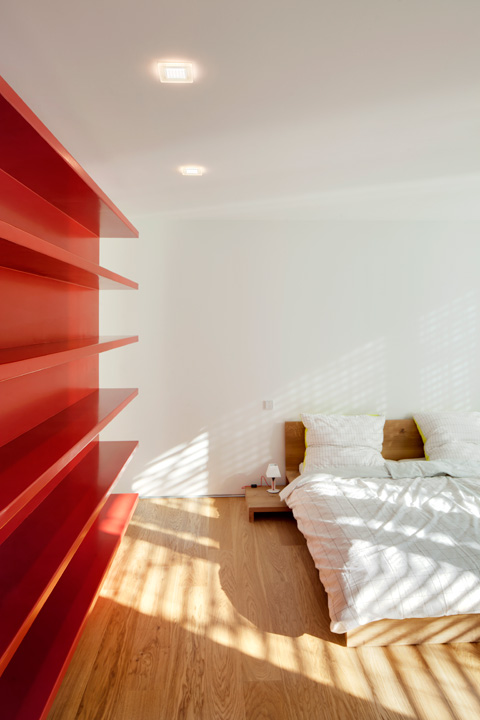A cube with a shimmering, reflective façade in Berlin symbolizes the harmony of modern architecture and trailblazing residential energy concepts.
The building is located in the immediate vicinity of the famed Kurfürstendamm and was selected from 16 entries as the prize-winner for the "Forschungsinitiative Zukunft Bau" competition organized by the German Federal Ministry of Transport, Construction and Urban Planning. The building's special feature is that it generates more energy in the course of a year than it consumes. It produces the energy needed to source the air conditioning, heating and hot water, to operate electrical appliances (household appliances, small devices, multimedia, etc.) and power up electric cars.
"Sustainable houses must not have that efficiency look, but instead need to be breathtakingly beautiful and powerful in appearance," suggests Werner Sobek, whose office together with Stuttgart University won the competition to design the Effizienzhaus-Plus. The jury was won over by the concept of an energy-efficient dwelling along with electromobility, that harmonizes user needs, the house and the vehicles perfectly.
Fifty "Q" modules light the Effizienzhaus-Plus
An energy-efficient use of artificial light is possible thanks to the use of innovative Nimbus luminaires that rely on LED.next technology. They serve as general lighting both inside and outdoors. The open and spacious entrance area is illuminated by LEDs from the module "Q 64 Aqua" series, while throughout the interior there are more than 50 modules from the "Q36" series. The "Q" modules provide pleasant, even light both in the working area in the kitchen, and in the bathroom and living room, fulfilling lighting requirements in all these different areas of the dwelling. Alongside technical illumination, over the dinig table there's an "L 120" pendant luminaire that with its minimalist aesthetic provides a design eye-catcher to support the "Q" modules.
Facts and figures
The energy efficiency house is destined for research purposes and to function as a model for others; it boasts the latest technology across 136 square meters of living area. The highlight: solar power generation in connection with solar-driven hot-water supplies, insulation and energy-saving facilities technology mean the house generates more power than it needs; this is stored in powerful batteries and used to load the house's electric cars. Additional power output is fed into the public grid.
Fifteen month trial period
Since March 2012 a four-person test family has lived at Fasanenstrasse 87 trying out the house under real conditions. Their experiences in the field of energy efficiency will be evaluated by the scientists for further consideration. The model project as conceived by the ministry is intended not to remain a one-off but to trigger further construction projects along similar lines.
www.nimbus-group.com
 In the living room the Nimbus Q-modules exude warm white uniform light | Photo © Jan Bitter
In the living room the Nimbus Q-modules exude warm white uniform light | Photo © Jan Bitter
 Photo © Jan Bitter
Photo © Jan Bitter
 Photo © Ulrich Schwarz
Photo © Ulrich Schwarz
 Photo © Ulrich Schwarz
Photo © Ulrich Schwarz
 In all areas of the home energy-efficient LED lighting modules of the type Nimbus Q are installed | Photo © Ulrich Schwarz
In all areas of the home energy-efficient LED lighting modules of the type Nimbus Q are installed | Photo © Ulrich Schwarz
 The entrance of the building is lit by LED lights of Nimbus' Aqua Q64 series | Photo © Ulrich Schwarz
The entrance of the building is lit by LED lights of Nimbus' Aqua Q64 series | Photo © Ulrich Schwarz
 Photo © Jan Bitter
Photo © Jan Bitter
 Photo © Jan Bitter
Photo © Jan Bitter







